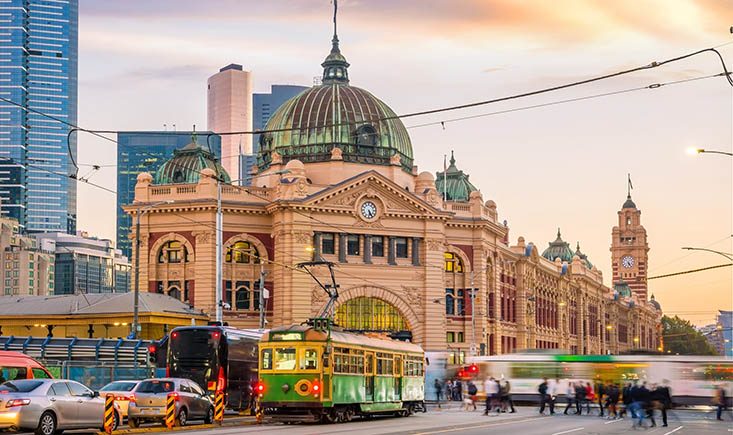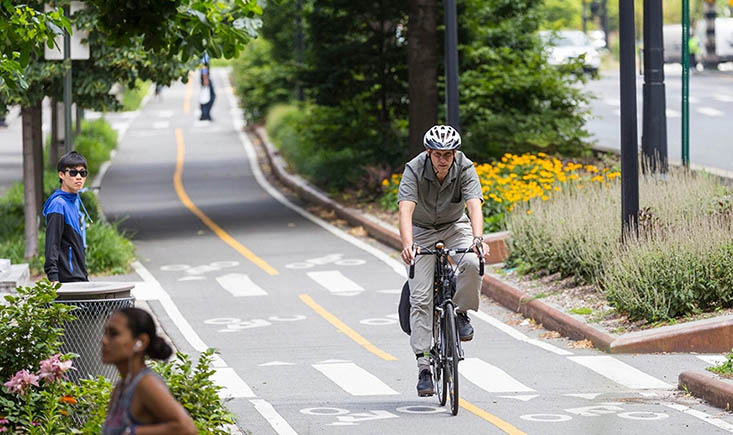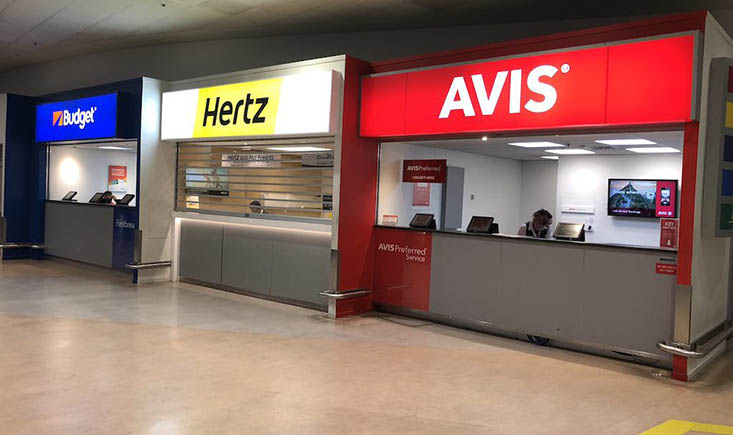
Navigating Melbourne: A Comprehensive Transportation Guide
Travel TipsMelbourne, often celebrated as Australia’s cultural capital, is a city that offers a myriad of experiences. From its bustling urban center to its picturesque suburbs, getting around Melbourne efficiently can enhance your travel experience significantly.
Public Transportation in Melbourne
Melbourne boasts a comprehensive and efficient public transportation system, which includes trains, trams, and buses. The system is managed by Public Transport Victoria (PTV), ensuring that residents and visitors can easily travel around the city and its surrounding areas.
Myki Card: Your Key to Public Transport
Before diving into the specifics of each mode of transportation, it’s crucial to understand the Myki card, Melbourne’s smart card ticketing system. The Myki card is essential for accessing trains, trams, and buses within Melbourne.
Where to Buy Myki Cards:
– Online: Purchase and top up your Myki card on the official PTV website.
– Retail Outlets: Available at 7-Eleven stores, select newsagents, and PTV Hubs.
– Stations: Buy and top up at Myki machines located at train stations and major tram stops.
How to Use Myki Cards:
– Touch On and Off: When boarding, touch your Myki card on the card reader. For trains and buses, touch off when you leave to ensure you’re charged the correct fare. On trams, you only need to touch on.
– Fares: Melbourne is divided into zones (Zone 1 and Zone 2). Most of the city’s attractions are within Zone 1. Daily caps apply, making it cost-effective for unlimited travel within a day.
Trains
Melbourne’s train network radiates from the city center, covering metropolitan areas and extending to regional Victoria.
Key Train Stations:
– Flinders Street Station: The hub of Melbourne’s train network, located in the heart of the city.
– Southern Cross Station: Serves as a major interchange for regional and suburban trains, as well as the SkyBus to the airport.
– Melbourne Central and Parliament Stations: Convenient for accessing key attractions and shopping districts.
Train Services:
– Frequency: Trains run frequently during peak hours, with reduced services in the evenings and on weekends.
– Timetables: Available online on the PTV website and via the PTV app.
Tips for Train Travel:
– Avoid Peak Hours: To ensure a more comfortable journey, avoid traveling during peak commuter times (7:00-9:30 AM and 4:30-7:00 PM).
– Stay Updated: Use the PTV app for real-time updates on train schedules and any service disruptions.
Trams
Melbourne is famous for its extensive tram network, which is the largest in the world. Trams are an iconic and convenient way to explore the city.
Free Tram Zone:
– Coverage: The Free Tram Zone includes the central business district (CBD) and extends to key landmarks such as the Queen Victoria Market and Docklands. Travel within this zone is free; no Myki card is needed.
Key Tram Routes:
– Route 96: From St Kilda Beach to East Brunswick, passing through Bourke Street Mall and the Melbourne Museum.
– Route 86: From Bundoora to Docklands, passing through the vibrant Fitzroy area.
– City Circle Tram (Route 35): A free service that provides a loop around the CBD, with commentary on landmarks and attractions.
Tips for Tram Travel:
– Timetables and Maps: Available at tram stops and on the PTV website.
– Safety: Always look out for traffic when boarding and alighting, and be mindful of the gap between the tram and the curb.
Buses
Buses complement the train and tram network, providing coverage to areas not served by other modes of transport.
Key Bus Routes:
– SkyBus: Offers express services to and from Melbourne Airport, operating 24/7.
– Route 246: From Elsternwick to Clifton Hill, running through St Kilda, Prahran, and Richmond.
– SmartBus Routes: These routes offer frequent and reliable services with extended operating hours, including routes 900, 901, 902, and 903.
Tips for Bus Travel:
– Planning: Use the PTV app or website to plan your journey and check bus timetables.
– Myki Use: Remember to touch on and off with your Myki card to ensure you’re charged correctly.
Cycling in Melbourne
Melbourne is a bike-friendly city, with dedicated cycling lanes and shared paths that make it easy to explore on two wheels.

Bike Share Schemes
Melbourne offers bike share programs for those who don’t own a bike but want to explore the city this way.
Key Programs:
– Melbourne Bike Share: Offers docking stations around the city. Bikes can be rented and returned at any station.
– Lime Bikes: A dockless bike-sharing service that allows you to locate and unlock bikes via a smartphone app.
Costs and Usage:
– Melbourne Bike Share: Short-term passes are available, including daily and weekly options. Prices vary, with affordable rates for short trips.
– Lime Bikes: Charges by the minute, with rates displayed in the app. Affordable and convenient for short journeys.
Popular Cycling Routes
Capital City Trail: A scenic loop around central Melbourne, passing through parks, gardens, and along the Yarra River.
St Kilda Beach to Brighton: A coastal route offering stunning views of Port Phillip Bay. Ideal for leisurely rides.
Yarra River Trail: Follows the Yarra River, offering a tranquil escape from the bustling city. Connects to various parks and recreational areas.
Tips for Cycling in Melbourne:
– Safety Gear: Helmets are mandatory. Wearing high-visibility clothing and using lights at night enhances safety.
– Bike Lanes: Always use designated bike lanes where available. Be mindful of pedestrians and other cyclists.
– Weather Considerations: Melbourne’s weather can be unpredictable. Carry a waterproof jacket and stay hydrated, especially during summer.
Walking in Melbourne
Walking is one of the best ways to experience Melbourne’s vibrant neighborhoods, hidden laneways, and iconic landmarks.
Pedestrian-Friendly Areas
CBD and Laneways: Melbourne’s CBD is pedestrian-friendly, with wide sidewalks and numerous crossings. The laneways, such as Hosier Lane and Degraves Street, are perfect for leisurely strolls and discovering street art and quaint cafes.
Southbank Promenade: A scenic walk along the Yarra River, offering stunning views of the city skyline, entertainment options, and dining venues.
Fitzroy and Carlton: These inner-city suburbs are known for their eclectic mix of boutiques, cafes, and heritage buildings. Walking through Fitzroy’s Gertrude Street and Carlton’s Lygon Street provides a taste of Melbourne’s cultural diversity.
Royal Botanic Gardens: A sprawling green oasis near the city center, perfect for a peaceful walk amidst native and exotic plants.
Walking Tours
For a more immersive experience, consider joining a guided walking tour. Several companies offer tours focusing on different aspects of Melbourne:
Hidden Secrets Tours: Specializes in uncovering Melbourne’s hidden gems, including art, history, and food.
Melbourne Free Walking Tours: Offers free tours covering major landmarks and historical sites. A great way to get an overview of the city.
Tips for Walking in Melbourne:
– Comfortable Footwear: Wear comfortable shoes, as you’ll likely cover a lot of ground.
– Weather Preparedness: Carry a small umbrella or rain jacket. Melbourne’s weather can change quickly.
– Stay Hydrated: Keep a water bottle handy, especially during warmer months.
Car Rentals in Melbourne
While public transport and cycling are convenient, renting a car can provide the freedom to explore Melbourne and its surrounding regions at your own pace.

Rental Companies
Melbourne is served by several reputable car rental companies:
Avis: Offers a wide range of vehicles and multiple pickup locations, including Melbourne Airport and city center.
Hertz: Known for its extensive fleet and excellent customer service. Locations throughout the city and at the airport.
Budget: Provides affordable options with various vehicle choices. Convenient pickup and drop-off points.
Europcar: Offers competitive rates and a diverse range of vehicles. Locations at the airport and within the city.
Driving in Melbourne
Road Rules:
– Drive on the left side of the road.
– Seatbelts are mandatory for all passengers.
– Observe speed limits and traffic signs.
Parking:
– CBD Parking: Parking in the city center can be challenging and expensive. Look for multi-story car parks or use parking apps to find available spots.
– Suburban Parking: Street parking is more readily available in suburban areas, but check for restrictions and time limits.
Tolls:
– Melbourne has several toll roads, including CityLink and EastLink. Rental cars are usually equipped with electronic toll tags, and charges will be billed to your rental agreement.
Tips for Car Rentals:
– Book in Advance: To secure the best rates and vehicle availability, book your car rental in advance.
– Insurance: Consider purchasing additional insurance for peace of mind.
– GPS Navigation: Use a GPS device or smartphone app for navigation. This will help you avoid traffic and find the quickest routes.
Travel Tips for Melbourne
Weather
Melbourne’s weather is notoriously unpredictable, often experiencing four seasons in one day.
Summer (December-February): Warm and sunny, with average temperatures ranging from 14°C (57°F) to 25°C (77°F). Perfect for beach outings and outdoor activities.
Autumn (March-May): Mild and pleasant, with temperatures ranging from 11°C (52°F) to 20°C (68°F). A great time for walking tours and exploring parks.
Winter (June-August): Cool and occasionally rainy, with temperatures ranging from 6°C (43°F) to 14°C (57°F). Ideal for indoor attractions and cozy cafes.
Spring (September-November): Mild and often windy, with temperatures ranging from 10°C (50°F) to 20°C (68°F). Perfect for garden visits and outdoor festivals.
Safety
Melbourne is a safe city, but like any major urban area, it’s important to stay aware of your surroundings.
Tips for Staying Safe:
– Avoid Isolated Areas at Night: Stick to well-lit and populated areas.
– Keep Valuables Secure: Be mindful of your belongings, especially in crowded places.
– Emergency Contacts: Know the local emergency number (000) and the location of the nearest police station or hospital.
Navigating Melbourne is an adventure in itself, offering a blend of efficient public transport, scenic cycling routes, and vibrant walking paths. Whether you’re exploring the city center by tram, cycling along the Yarra River, or driving to the outskirts, understanding the transportation options can enhance your travel experience.
I’ve found Melbourne to be a city that seamlessly blends convenience with charm, making every journey an opportunity to discover something new. So, grab your Myki card, hop on a tram, or pedal through the laneways—Melbourne awaits you with open arms.
You may also like
Recent Posts
- Savor the Plant-Based Delights! Top 3 Vegan Hotspots in Austin
- Austin Travel Budget Guide: Comprehensive Planning from Flights to Food
- Budget-Friendly and Stylish: A Guide to High-Value Boutique Stays in Austin
- Top 5 Must-Visit Destinations Around Austin: From Natural Parks to Texan Small Towns
- 10 Must-Try Local Delicacies in Monterrey: My Personal Experiences and Delicious Recommendations

Leave a Reply